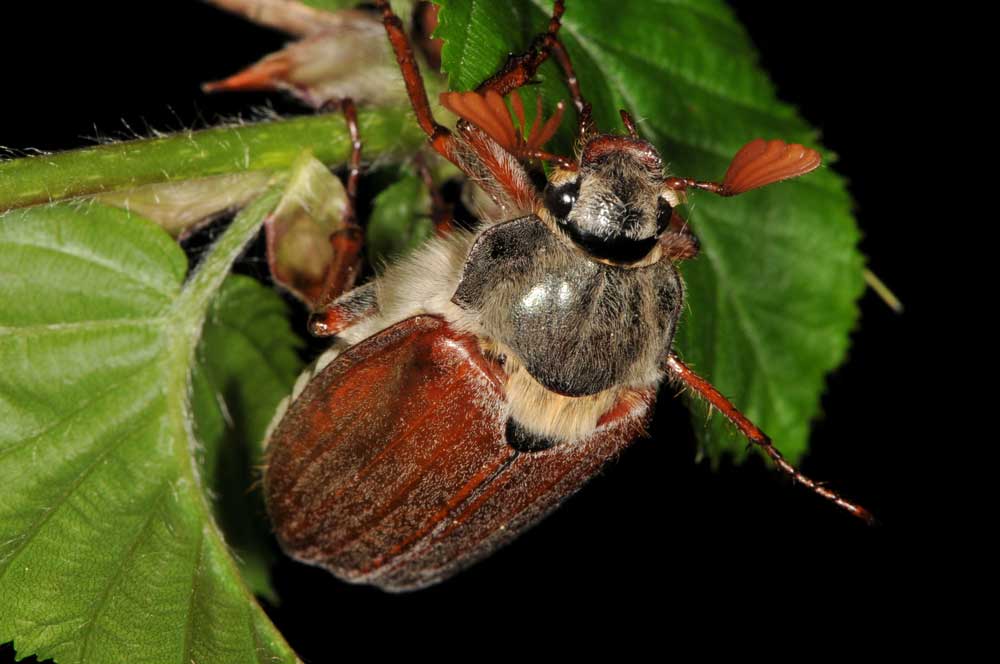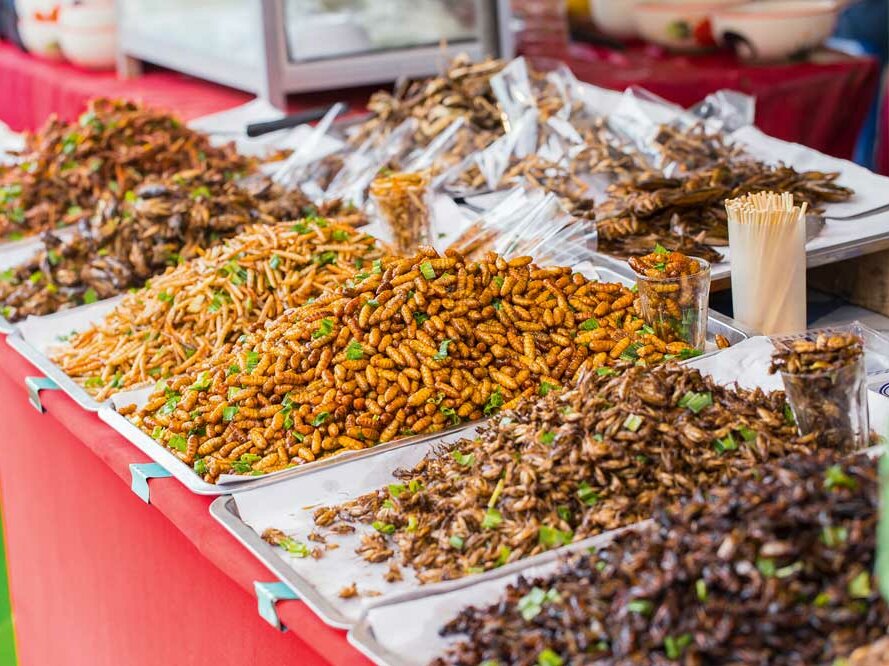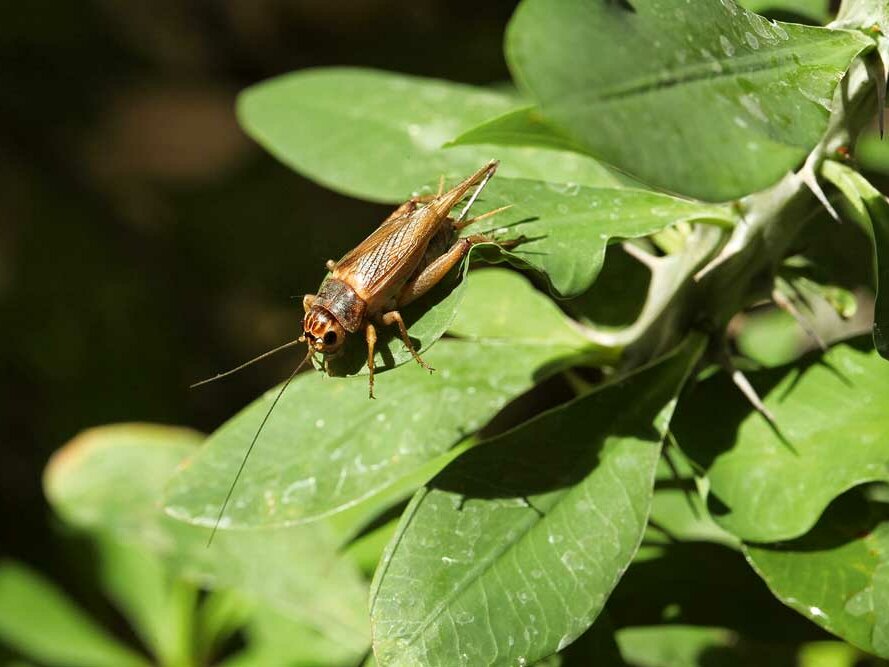Insects - The great crawling has begun
By Markus Wolf, DLG Mitteilungen
From grasshoppers, crickets and ants to palm weevils, silkworm larvae and bamboo maggots to giant water bugs - the variety of insects consumed in Thailand (and not only there) is great. What is a nutritious and appealing addition to the daily menu for many people in Asia, Africa and South America tends to trigger disgust in most Central Europeans or is examined with interest from afar. Why is that, and why has the topic of "insects as food" been gaining momentum lately?
Insects as food for humans
Why the majority of Europeans shudder at the thought of insects on their plates is easy to explain. It is a combination of disgust, hygiene concerns and lack of habituation. If we take consumer surveys as a yardstick (and that should always be done with reservations), about one in five inhabitants can imagine eating insects. By comparison, every third person is willing to eat a creepy-crawly as a kind of dare. Despite the low level of acceptance: when looking at the shelves of food retailers, one increasingly comes across meat alternatives or baked goods that more or less clearly advertise insects as an ingredient. More widespread is the distribution via online shops on the internet.
Ensuring the supply of protein
The FAO has brought the issue of edible insects to the attention of a broad global public. About ten years ago, the organisation posed the question of how to secure the protein supply for the world's population, which is estimated at 9 billion people by 2050 (the current forecast is 9.7 billion). Doubling traditional agricultural production is out of the question for the FAO because of the associated demand for land and resources. Instead, it suggested insects at the time. Already today, more than 2 billion people regularly eat insects. So it makes sense to explore the potential for this type of protein supply on a global scale.
The number of species collected (mostly) or farmed (rarely) by humans for food is estimated at around 2 000, of which a good two-thirds come from these three animal families: beetles (31 %), caterpillars (18 %) and hymenopterans such as bees, wasps and ants (14 %).
In general, the prevalence and extent of entomophagy - the technical term for the consumption of insects - is highly dependent on cultural and religious customs. According to estimates, insects are a fundamental part of the diet in more than 130 countries, and have been for centuries in some cases. Especially poor classes in Asia, Africa and Central America regularly resort to this kind of food. In Europe, on the other hand, where people usually associate the word "insect" with the term "pest" (leaving aside exceptions such as the honey bee or beneficial insects like the ladybird), such a tradition never developed across the board. At best, there were single cases such as may beetle soup, which went out of fashion in Germany after 1950.

Sustainability brings edible insects into focus
The historically grown aversion to insects on the plate has not prevented the interest in the topic in the EU (and other industrialised nations such as the USA) from increasing in the recent past. The obvious reason is the growing importance of issues such as sustainability and environmental protection. Here, insect farming can score points compared to classical animal husbandry, according to the FAO:
- Environmental aspects: Neither agricultural land is absolutely necessary for the production of the insects nor the required feed; organic waste can be used instead. The water requirement for breeding is lower. Insects emit fewer greenhouse gases than most farm animals, and there are fewer nitrogen emissions during husbandry. As cold-blooded animals, insects have better feed conversion than warm-blooded animals that require energy to maintain body temperature (e.g. grasshoppers about 2:1).
- Nutritional aspects: Insects are a nutritious alternative to beef, pork, poultry and also fish. Many insects are rich in protein, omega-3 fatty acids and nutrients such as calcium, iron and zinc. The consumption of insects is already established in many parts of the world.
- Economic aspects: Insect breeding and harvesting are in principle capital-extensive "low tech", which can be done on a small scale (but also highly mechanised in large-scale facilities), opening up participation and sources of income even for the poorest parts of a population.
Policy requirements
One reason for the recent low uptake of insect-derived foods in the EU - apart from buyer reluctance - is probably the current lengthy approval process. In addition to the generally applicable requirements for food hygiene, the production and marketing of edible insects in the EU is regulated by the Novel Food Regulation. This was adopted in 2015 and came into force on 1 January 2018.
The Novel Food Regulation states that all foods that were "not used for human consumption to a significant degree within the Union" before 1997 require authorisation if they are to be further marketed. This includes insects. Products already available on the market at the time of the regulation's entry into force could continue to be marketed until the EU Commission's official decision on an authorisation (again, the deadline for submitting corresponding applications was the beginning of 2020).
According to the specifications, after a positive risk assessment by the European Food Safety Authority (EFSA) and subsequent endorsement by the EU Member States, the EU Commission grants a product authorisation for the distribution of the products and uses listed in the application (and only for these!) throughout the EU. Not only does this process take several years, the applicant can insist on the protection of its own test results and secure sole distribution rights for a period of five years. If another company wants to market the same product during this period, this is possible, but it must conduct and submit its own studies instead of referring to an existing authorisation for a similar product. Alternatively, licensing by the first applicant is possible.
The long road to approval
The path to authorisation of insects as food in the EU currently takes several years, as the example of Acheta domestica (cricket) shows:
July 2019: Submission of the authorisation application for the use of partially defatted cricket powder for a good two dozen applications as a novel food in the EU by the Vietnamese company Cricket One; in addition, application for the protection of scientific studies.
July 2020: The EU Commission commissions the European Food Safety Authority (EFSA) to carry out a corresponding safety assessment.
March 2022: Publication of the EFSA safety assessment, which certifies that defatted cricket powder is safe for the intended use, but points out the possibility of allergies.
January 2023: Approval of partially defatted cricket powder under the Novel Food Regulation and granting of a five-year authorisation for sole distribution by Cricket One.
But: Other companies can conduct their own studies and also apply for approval.
Insect production as a future market?
Which insects have been approved for consumption so far?
- Mealybug (Tenebrio molitor) dried in the larval stage (June 2021) and as frozen, dried and powdered larvae (March 2022);
- Migratory locust (Locusta migratoria) frozen, dried, powdered (November 2021);
- House cricket (Acheta domesticus) frozen, dried, powdered (February 2022) and as partially defatted powder (January 2023);
- Cereal mould beetle (Alphitobius diaperinus) in larval stage frozen, paste-like, dried, powdered (January 2023).
A further eight applications for authorisation have been submitted to the EU Commission. The applicants of the products approved so far are based in France, Vietnam and the Netherlands. The Netherlands is also the leading country in the EU in terms of edible insect production.
Yet there are no official statistics on the production of edible insects. The European Insect Food and Feed Federation (IPIFF) currently puts the total annual production (for both uses) at "a few thousand tonnes". At the same time, it sees investments in the billions and expects rapid growth in the coming years. One could also say: the big crawl has begun.





